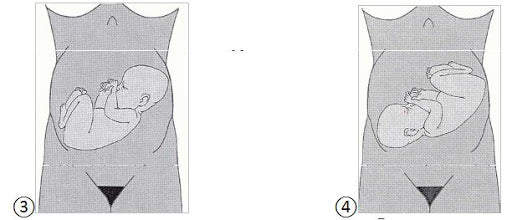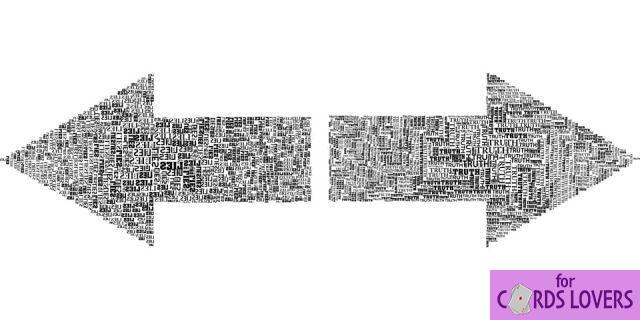
The term nervous fatigue (in medicine neurasthenia, "fatigue of the nerves") refers to a state of extreme mental and physical fatigue resulting from severe stress which can be related to the sphere:
- economic,
- job,
- école,
- familiar,
- Social,
- interpersonal.
In the common sense of the term, “exhaustion” precisely designates the consumption, the emptying of personal energies which involves a wide spectrum of symptoms in response to high demands, at a given moment.
Neurasthenia was first studied over a century ago in 1869 by American neurologist George Beard who described it as a condition characterized by:
- mental and physical fatigue,
- anxiety and depressive symptoms,
- headache ,
- incapacity,
- muscle, joint and neuropathic pain (in the territory of innervation of a particular nerve).
Neurasthenia then peaked in the early 20th century, later spreading to Asian countries, then reappearing in Western countries in the mid-20th century and reaching high levels in the Chinese population in the late 1980s.
The CAUSES of nervous fatigue
The causes of neurasthenia are due to the imbalance between:
- the requirements of the environment and the outside world (professional, school, social, family, cultural, relational, etc.),
- individual ability to respond to such stimuli.
Both in the event that the demands are excessive on the person and in the event that the individual himself does not have adequate resources to manage the stress, the result will invariably be intense mental and bodily fatigue, associated with various physical symptoms. and cognitive (thought, behavior, memory).
The causes can therefore be:
- professional and economic concerns (loss of employment, debts, precariousness),
- family and relational problems (divorces, separations, communication problems),
- changes in the social role (especially in women),
- trauma and violence,
- character traits of the person.
SYMPTOMS
Symptoms of neurasthenia are very similar to those of chronic fatigue syndrome, neurosis, mood disorders, and somatoform disorders, so much so that their distinction in clinical classifications is not as sharp, with the risk that patients will not be treated adequately. .
According to the ICD-10 (International Statistical Classification of Diseases and Related Health Problems, established by the World Health Organization), the characteristic symptom of nervous breakdown is intense physical and mental fatigue that occurs as a result of periods significant emotional tension, which is manifested by the appearance of:
- diffuse or joint pain,
- dizziness and vertigo,
- headache ,
- sleeping troubles ,
- difficulty relaxing
- irritability,
- dyspepsia (called "indigestion", abdominal swelling, nausea, vomiting, heartburn, bad breath).
There may also be various autonomic symptoms such as:
- tremors,
- palpitations ,
- low blood pressure,
- high blood pressure,
- perspiration .
Neurasthenia or chronic fatigue syndrome?
In particular, the sharing of symptoms with the later chronic fatigue syndrome has led some researchers to regard the latter as a "modern" version of XNUMXth century neurasthenia.
Chronic fatigue syndrome is an increasingly popular diagnosis these days, and although the focus is more on the physical than the mental aspect of neurasthenia, there are many symptoms in common:
- generalized physical and mental fatigue,
- physical symptoms (such as joint pain, headache),
- cognitive symptoms (such as difficulty concentrating, memory loss),
- emotional symptoms (such as irritability, excitement).
Neurasthenia and chronic fatigue syndrome also share causes, as both appear after periods of high stress and worry and can severely compromise quality of life.
However, neurasthenia has important socio-cultural connotations, especially in the Asian population, for whom work and related concerns have a different meaning than in Western countries. For this reason, neurasthenia remains central to diagnosis in Asian countries, although other disorders may be present at the same time.
DIAGNOSIS
The diagnostic criteria for neurasthenia are controversial and over time there have been several revisions regarding the clinical classification, so much so that the disorder is found as a separate category in a disease type classification (ICD-10 and CCMD -3) while it is eliminated in another type of classification (DSM V).
In DSM V (the Statistical and Diagnostic Manual of Mental Disorders, written by the American Psychiatric Association), indeed, neurasthenia is included in the final glossary as a "cultural concept of suffering" typical of Asian culture, this to highlight the relationship between the socio-cultural context and the definition of emotional suffering.
"Shenjing shuairuo" ("weakness of the central nervous system" in Mandarin Chinese) is actually a syndrome that incorporates the concepts of traditional Chinese medicine and the Western diagnosis of neurasthenia (physical and mental fatigue, dizziness, headache, pain, difficulty concentrating, sleep disturbances and memory loss).
In other classifications, however, neurasthenia is recognized as a definite category and based on these the physician will investigate the subject's family and personal history, symptoms and the presence of any recent stress.
- Diagnosis according to ICD-10 (International Statistical Classification of Diseases and Related Health Problems). Neurasthenia is a type of fatigue that occurs after intense mental and emotional exertion (but also after minimal exertion), often accompanied by impairment in work and daily life. The diagnosis is clinical and is based on the presence of at least 2 of the 7 main symptoms:
- muscle aches or pains,
- dizziness
- headache,
- sleep disorders,
- difficulty relaxing
- irritability,
- dyspepsia ("indigestion").
- Diagnosis according to CCMD-3 (Chinese Classification of Mental Disorders) . The diagnosis is clinical and is based on the presence of at least 3 of the 5 clusters of symptoms:
- physical or mental weakness,
- irritation or worry,
- excited,
- neuropathic pain,
- sleep disturbances.
With consequent difficulty in professional, school, social and daily life.
Differential diagnosis
It is important to rule out certain mental and medical conditions that may mimic or overlap with the disorder, such as:
- generalized anxiety disorder,
- panic disorder,
- health anxiety disorder (hypochondria),
- mood disorders,
- trouble somatiforme,
- somatization disorder,
- sexual dysfunction,
- other medical conditions that affect heart rate, blood pressure, sweating, bowel function, etc.
TRAITEMENT
Currently, there are not many scientific studies on neurasthenia, especially if one looks for well-structured studies, which analyze the effectiveness of a particular treatment or which compare one therapeutic approach to another, although that condition is no longer a new concept.
As with other psychological disorders, the internationally validated remedy is the combination of
- psychotherapy,
- antidepressant drugs.
Being a clinical condition that develops due to strong worry and stress, and which inevitably affects not only the mind as we know it, but also the functions of the body, it is very important to follow a lifestyle focused on the total well-being of the person, made up of
- balanced diet ,
- exercising or engaging in regular physical activity,
- modification of stress factors, if possible (e.g. work habits and rhythms, dysfunctional interpersonal relationships),
- stress management,
- self-care (cultivating hobbies, nurturing a network of good friendships, taking time for yourself, setting strong boundaries for self-respect).


























